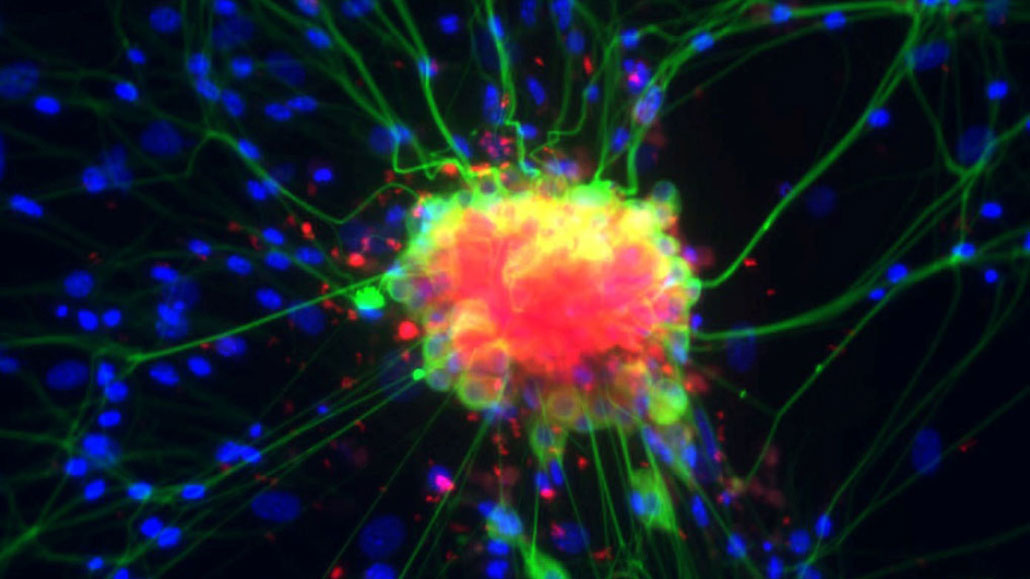action potential: A brief change in the electrical potential on the surface of a cell, especially of a nerve or muscle cell. It happens when the cell is stimulated. This triggers the release of an electrical impulse.
axon: The long, tail-like extension of a neuron that conducts electrical signals away from the cell.
cell: The smallest structural and functional unit of an organism. Typically too small to see with the unaided eye, it consists of a watery fluid surrounded by a membrane or wall. Depending on their size, animals are made of anywhere from thousands to trillions of cells. Most organisms, such as yeasts, molds, bacteria and some algae, are composed of only one cell. (in telecommunications) A technology that relies on a large number of base stations to relay signals. Each base station covers only a small area, which is known as a cell. Phones that rely on this system are typically referred to as cell phones.
cell body: The compact section of a neuron where its nucleus is located.
chemical: A substance formed from two or more atoms that unite (bond) in a fixed proportion and structure. For example, water is a chemical made when two hydrogen atoms bond to one oxygen atom. Its chemical formula is H2O. Chemical also can be an adjective to describe properties of materials that are the result of various reactions between different compounds.
chemical messenger: (in physiology) Molecules that send signals from one place to another within the body. Messages pass from one neuron to another via chemical messengers. Hormones are also chemical messengers from one body part to another
chemical signal: A message made up of molecules that get sent from one place to another. Bacteria and some animals use these signals to communicate.
contract: To activate muscle by allowing filaments in the muscle cells to connect. The muscle becomes more rigid as a result. (in commerce) An agreement between two parties, such as to make a purchase or provide some service.
dendrites: Hair-like projections from the head (cell body) of a neuron. They sit ready to catch a neurotransmitter, a chemical signal, that has been released by a neighboring neuron.
information: (as opposed to data) Facts provided or trends learned about something or someone, often as a result of studying data.
ion: An atom or molecule with an electric charge due to the loss or gain of one or more electrons.
membrane: A barrier which blocks the passage (or flow through) of some materials depending on their size or other features. Membranes are an integral part of filtration systems. Many serve that same function as the outer covering of cells or organs of a body.
muscle: A type of tissue that produces movement by contracting its cells, known as muscle fibers. Muscle is rich in protein, which is why predatory species seek prey containing lots of this tissue.
nerve: A long, delicate fiber that transmits signals across the body of an animal. An animal’s backbone contains many nerves, some of which control the movement of its legs or fins, and some of which convey sensations such as hot, cold or pain.
nervous system: The network of nerve cells and fibers that transmits signals between parts of the body.
neuron: The main cell type of the nervous system—the brain, spinal column and nerves. These specialized cells transmit information by producing, receiving and conducting electrical. Neurons also can transmit signals to other cells with chemical messengers.
spinal cord: A cylindrical bundle of nerve fibers and associated tissue. It is enclosed in the spine and connects nearly all parts of the body to the brain, with which it forms the central nervous system.
synapse: The junction between neurons that transmits chemical and electrical signals.
terminal: The end point or last station in some system, network or process. The end of the line.
transmit: (n. transmission) To send or pass along.
wave: A disturbance or variation that travels through space and matter in a regular, oscillating fashion.








